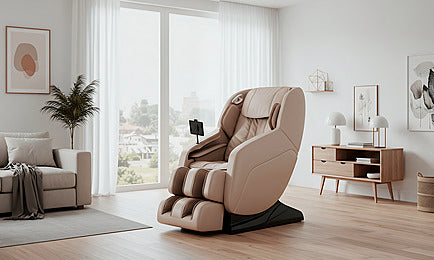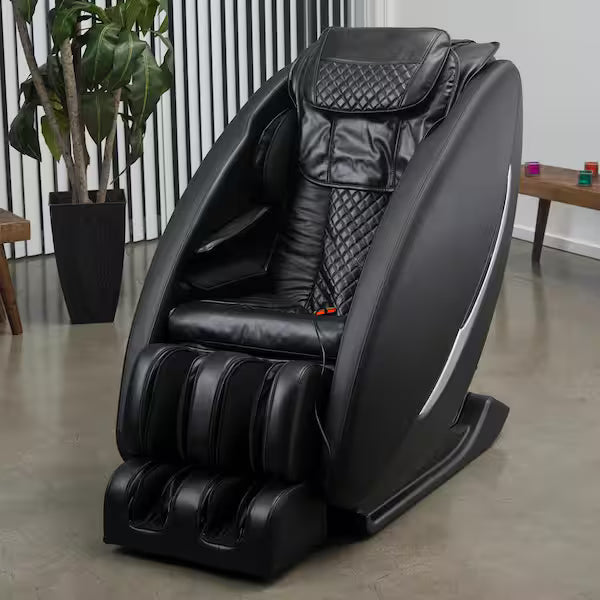Self-massage chairs: When will they arrive?

Self-Massage Chairs: When Will They Arrive?
Introduction
Massage has been a cornerstone of relaxation, healing, and wellness for centuries. From ancient Chinese acupressure to Japanese shiatsu and Thai massage, human touch has always been recognized as a powerful tool for stress relief and physical recovery. In recent decades, massage technology has advanced rapidly, with Massage chair Cambodia models becoming increasingly sophisticated and widely available. Yet, despite their progress, these devices still largely require manual operation, preset programs, or external adjustment.
This raises a fascinating question: when will true self-massage chairs arrive—chairs that can intelligently sense, adjust, and respond to a user’s body without needing human intervention or complicated settings? To answer this, we need to explore the evolution of massage technology, the integration of artificial intelligence, current limitations, and the likely timeline for this innovation.
The Evolution of Massage Chairs
The journey of massage chairs reflects broader technological progress:
-
Early Models (1950s–1980s): The first massage chairs relied on simple mechanical rollers and vibration functions. They provided basic relief but lacked precision.
-
Programmable Massage Chairs (1990s–2000s): Companies introduced preset programs that could mimic different massage styles such as kneading, tapping, and shiatsu. Chairs began to include recline functions, heating pads, and more ergonomic designs.
-
Smart Features (2010s–2020s): Today’s Massage chair Cambodia units often include body scanning, Bluetooth connectivity, zero-gravity reclining, and multiple intensity levels. Some premium models integrate voice commands and basic AI to personalize massages.
But are these truly “self-massage” chairs? Not quite. While advanced, most still require manual selection of massage types or lack the deep adaptive intelligence that would define a chair capable of independently understanding and addressing human needs.
What Defines a True Self-Massage Chair?
A “self-massage chair” goes beyond convenience. It implies autonomy and intelligence. To qualify as truly self-operating, such a chair would need to include several defining capabilities:
-
Full Body Scanning in Real Time: Instead of a one-time scan at the start, the chair would continuously adjust to body position and detect new areas of tension.
-
Biometric Feedback: Integration of sensors to monitor heart rate, stress levels, muscle stiffness, and blood circulation.
-
AI-Driven Personalization: Machine learning to adapt massages based on a user’s unique needs, past preferences, and real-time conditions.
-
Hands-Free Operation: The chair would not require manual program selection or adjustments. A user could simply sit down, and the chair would take over.
-
Predictive Care: Over time, the chair would learn about a user’s lifestyle and predict when a massage session is needed most, similar to how smartwatches track activity and recommend exercise.
When combined, these features would elevate massage chairs into a new category of self-operating wellness devices.
The Role of Artificial Intelligence
Artificial intelligence is the most critical driver in the development of self-massage chairs. Current high-end chairs already use rudimentary AI in the form of body scanning and program adjustments. However, true self-operation would require:
-
Natural Language Processing (NLP): Allowing the chair to understand voice commands and questions naturally.
-
Machine Learning Algorithms: Adapting massage pressure and style based on historical data.
-
Computer Vision & Pressure Mapping: Using cameras and deep sensors to analyze muscle tension, posture, and body shape dynamically.
-
Emotional AI: Detecting stress levels through tone of voice or biometric cues, then adjusting massage style accordingly.
In essence, AI would make a Massage chair Cambodia not just a machine, but an intelligent wellness companion.
Barriers to Self-Massage Chair Development
While the concept is exciting, several challenges slow down progress:
-
Technical Complexity: Creating accurate biometric scanning that works for all body types is difficult. Current body scan systems can sometimes misalign rollers with actual muscle points.
-
Cost of Development: Advanced AI integration, high-quality sensors, and robotics would make such chairs extremely expensive, at least in the beginning.
-
Safety Concerns: A fully autonomous massage chair must ensure safety to avoid excessive pressure, nerve compression, or injury.
-
Regulatory Approval: Devices that use health-related biometric data may face regulatory scrutiny, especially if marketed as medical devices.
-
Consumer Readiness: Many consumers still prefer human massage. A leap toward fully self-operating chairs may take time to gain trust.
Global Trends in Massage Chair Innovation
The global wellness industry is booming, and self-massage chairs are an inevitable part of this growth.
-
Japan & South Korea: Leading manufacturers are experimenting with AI-driven scanning and predictive massage programs.
-
China: Robotics companies are integrating advanced automation into wellness technology, pushing the boundaries of affordability.
-
United States & Europe: Luxury markets demand premium features such as smart home integration, voice assistance, and biometric personalization.
This global push suggests that Cambodia and Southeast Asia will not be far behind in adopting these innovations, especially as wellness becomes a cultural priority.
Timeline: When Will They Arrive?
Predicting the exact arrival of true self-massage chairs requires considering current trends:
-
Short-Term (2025–2030): Gradual improvements in body scanning, smart algorithms, and minor AI upgrades. We will see semi-autonomous features, but not full independence.
-
Medium-Term (2030–2035): Integration of advanced biometric sensors and predictive personalization. Chairs may become capable of adjusting completely without user input.
-
Long-Term (2035 and beyond): Widespread availability of fully autonomous self-massage chairs, potentially integrating with smart homes, wearable devices, and healthcare systems.
Thus, while we may see partial versions in the next decade, truly intelligent and self-operating massage chairs will likely become mainstream by the mid-2030s.
The Impact on Cambodia
The Cambodian market for wellness and relaxation technology is growing rapidly. As living standards rise and urban lifestyles become more stressful, demand for high-quality relaxation devices will increase. Massage chair Cambodia brands and distributors have a unique opportunity to lead this shift by:
-
Partnering with global manufacturers to bring the latest technology to the Cambodian market.
-
Educating consumers on the benefits of AI-driven massage systems.
-
Offering financing or installment options to make advanced massage chairs accessible to more households.
-
Establishing wellness centers that showcase futuristic massage chairs as premium relaxation experiences.
By preparing early, Cambodia can position itself as a regional hub for advanced massage technology adoption.
Benefits of Self-Massage Chairs
The introduction of autonomous massage chairs will redefine home wellness in multiple ways:
-
Accessibility: People with limited mobility or no access to professional massage can benefit daily.
-
Consistency: Unlike human therapists who vary in technique, AI-powered chairs will provide reliable, repeatable massages.
-
Affordability in the Long Run: While initially expensive, these chairs could save consumers money compared to regular spa visits.
-
Integration with Healthcare: Future versions may sync with doctors or physiotherapists, offering therapeutic massage as part of treatment plans.
-
Stress Management: In high-stress societies, automated massage could become as common as owning a treadmill or smart watch.
Ethical and Social Considerations
As with all automation, there are potential concerns:
-
Job Displacement: Will widespread adoption reduce demand for professional masseurs? Possibly, though many people will still prefer human touch for emotional connection.
-
Data Privacy: With biometric data involved, manufacturers must ensure strong protections against misuse.
-
Overdependence: Some users may rely too heavily on machines, neglecting physical activity or social interaction.
These issues must be addressed carefully as the technology develops.
Conclusion
The dream of self-massage chairs is no longer science fiction. With AI, robotics, and biometric technology advancing rapidly, the future is closer than we think. While challenges remain—technical, economic, and social—the trajectory points toward a world where a person can simply sit down, and a chair will intuitively deliver the perfect massage without a single button pressed.
For consumers in Cambodia, this means the wellness revolution is on the horizon. Distributors and retailers of Massage chair Cambodia products will play a critical role in bridging global innovation with local demand. By the mid-2030s, self-massage chairs may become as common as smartphones, transforming not only relaxation but also how we care for our bodies daily.
The real question, then, is not if self-massage chairs will arrive, but when you will bring one into your home.












